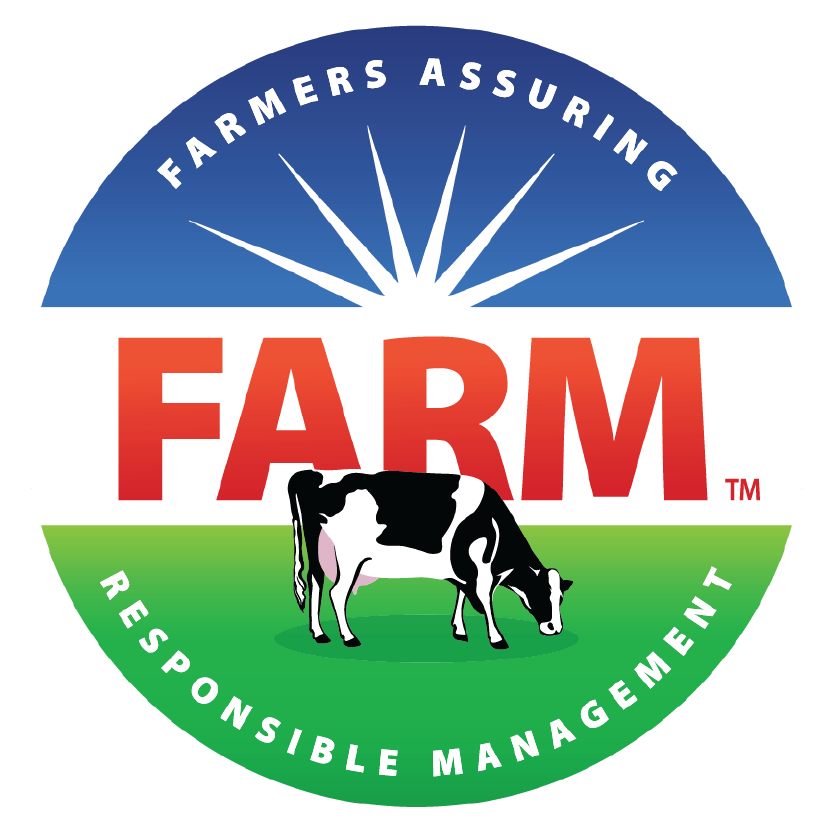Mastitis Prevention: Dry-Off Procedures
alternative practice names:
Dry Cow Management; Dry Off; Dry Cow Therapy; Selective Dry Cow Therapy
The two most common times for cows to become infected with mastitis-causing organisms are during dry-off and at calving. Mastitis, during the dry-off period, occurs due to changes in milk flow and udder pressure, which can damage udder tissue and increase susceptibility to infection. Open teat canals initially provide entry points for bacteria until they close and form protective plugs. Hormonal changes, stress, and reduced immune response during this time further elevate infection risk. Effective management practices, including good hygiene, proper nutrition, and dry cow therapy, can minimize mastitis incidence during this period.
Various dry-off treatment options are available for dairy farms. Typically, dry treatment consists of an intramural infusion of antimicrobials and a teat sealant. On organic farms, either an internal or external teat sealant is used.
There are different protocols governing dry-off procedures. Traditionally, blanket dry cow therapy (BDCT) has been used, where all quarters of all cows are treated with antibiotics at dry-off. More recently, there has been a move towards selective dry cow therapy (SDCT) to reduce antibiotic use. With SDCT, only cows meeting certain criteria receive antibiotic treatment at dry-off. Protocol selection should be based on what is most practical for the team handling the drying-off process and record-keeping. An independent review of protocols and hygiene can be used to identify opportunities for improvement.
Mastitis is one of the most prevalent health challenges in dairy cows, so the choices and execution of various management procedures around dry-off warrant substantial attention.
When used, in what regions in the U.S. is the practice found:
Northwest, West, Upper Midwest, Southwest, Northeast, Southeast
FARM SIZE
When used, typically found on farms of the following sizes:
All Sizes

Practice Benefits
Higher milk production: Excellent protocol compliance improves performance and can influence profitability through higher milk production, lower disease incidence, and labor efficiency.
Decreased antibiotic usage: SDCT can reduce antibiotic use by up to 55% compared to BDCT while maintaining udder health, if implemented correctly (Rowe et al. 2023).
We're always eager to update the website with the latest research, implementation insights, financial case studies, and emerging practices. Use the link above to share your insights.

Implementation Insights
Site-specific or Farm-specific requirements

In most cases, there are no specific site or farm requirements.
Required Capital Expenditures (CapEx)

Facility construction: Dedicated dry cow facilities can better support the successful implementation of best practices. For example, selective dry cow therapy is more likely to be successful when dry cows are housed in pens with appropriate stocking densities, regular alley scraping, and well-maintained bedding.
Required Operational Expenditures (OpEx)

Recurring testing: SDCT requires monthly tests of individual cow somatic cell counts.
Implementation Considerations

Dry cow environment: SDCT success depends on maintaining a clean and well-managed dry cow environment. This includes proper stocking densities, regular cleaning, and comfortable bedding to reduce stress and minimize infection risks.
Record-keeping: SDCT demands more detailed record-keeping and precise execution compared to blanket treatment, placing higher demands on management.
Practice and product selection: Researchers are continually exploring products that combat intramammary infections, protect the mammary gland from new infections, and reduce milk production during dry periods. Evidence indicates that these products can be effectively incorporated into appropriate dry-off protocols for many herds. Determining which practices and products are most beneficial in a specific situation involves assessing the risks associated with cows entering the dry period for that particular herd.
Teat sealants: Internal teat sealants have been shown to protect against new intramammary infections, both with and without a preceding antimicrobial infusion.
Oral boluses: Oral boluses that acidify the rumen, thereby reducing feed intake and milk production when administered at dry-off, have been shown to decrease udder pressure, increase lying time in dry cows, and lower the incidence of certain udder health issues in the subsequent lactation. This makes them a promising additional tool for dry-off management.
Financial Considerations and Revenue Streams
There are no federal cost-share programs or conservation funding for this practice.
FINANCIAL RESOURCES, TOOLS, AND CASE STUDIES
Additional Resources
Article: Managing Dry Cows to Reduce Mastitis in the Future (Pennsylvania State University)
Article: Managing Mastitis Through Proper Dry Off Procedures (University of Georgia)
Article: Selective Dry Cow Therapy (University of Minnesota)
Article: Selective Dry Cow Therapy, an Option to Consider (Pennsylvania State University)
Factsheet: Dry Cow Therapy (National Mastitis Council)

Environmental Impacts
MAY REDUCE FARM GREENHOUSE GAS FOOTPRINT
There is currently little scientific research evaluating the impact of the practice on a farm's environmental footprint. Research by Mostert et al. (2019) found that mastitis in dairy cows leads to a significant increase in greenhouse gas (GHG) emissions. Specifically, the greenhouse gas emissions of cows with clinical mastitis increased on average by 6.2% (per kilogram of milk) compared to cows without clinical mastitis. This increase is attributed to factors such as reduced milk yield, extended lactation periods, and prolonged calving intervals, all of which contribute to less efficient milk production and higher overall emissions.
Further research is necessary to fully understand the long-term impacts of mastitis on greenhouse gas emissions and to develop more effective strategies for mitigating these effects in dairy farming.
REFerences
Contents
We're always eager to update the website with the latest research, implementation insights, financial case studies, and emerging practices. Use the link above to share your insights.

Alignment with FARM Program
FARM Environmental Stewardship (ES) V2-V3 Alignment
An optional input in FARM ES Version 3 asks which percentage of culls are for mastitis. Cull rates influence herd demographics and replacement rates, which in turn impact the greenhouse gas emissions intensity.
FARM Animal Care (AC) V5 Alignment
FARM AC requires producers to have a Herd Health Plan (HHP), which includes written protocols for the treatment of common diseases, including diarrhea, displaced abomasum, ketosis, mastitis, milk fever, metritis, pneumonia, and any additional routinely occurring diseases identified by the veterinarian.
The two most common times for cows to become infected with mastitis-causing organisms are during dry-off and at calving. Mastitis, during the dry-off period, occurs due to changes in milk flow and udder pressure, which can damage udder tissue and increase susceptibility to infection. Open teat canals initially provide entry points for bacteria until they close and form protective plugs. Hormonal changes, stress, and reduced immune response during this time further elevate infection risk. Effective management practices, including good hygiene, proper nutrition, and dry cow therapy, can minimize mastitis incidence during this period.
Various dry-off treatment options are available for dairy farms. Typically, dry treatment consists of an intramural infusion of antimicrobials and a teat sealant. On organic farms, either an internal or external teat sealant is used.
There are different protocols governing dry-off procedures. Traditionally, blanket dry cow therapy (BDCT) has been used, where all quarters of all cows are treated with antibiotics at dry-off. More recently, there has been a move towards selective dry cow therapy (SDCT) to reduce antibiotic use. With SDCT, only cows meeting certain criteria receive antibiotic treatment at dry-off. Protocol selection should be based on what is most practical for the team handling the drying-off process and record-keeping. An independent review of protocols and hygiene can be used to identify opportunities for improvement.
Mastitis is one of the most prevalent health challenges in dairy cows, so the choices and execution of various management procedures around dry-off warrant substantial attention.
Practices and technologies
Mastitis Prevention: Dry-Off Procedures
alternative practice name:
Dry Cow Management; Dry Off; Dry Cow Therapy; Selective Dry Cow Therapy
REGIONALITY
When used, in what regions in the U.S. is the practice found:
Northwest, West, Upper Midwest, Southwest, Northeast, Southeast
COMPARABLE FARM SIZE
When used, typically found on farms of the following sizes:
0 - 100 cows, 100 - 500 cows, 500 - 2500 cows, 2500 - 5000 cows, Over 5000 cows

Practice Benefits
Higher milk production: Excellent protocol compliance improves performance and can influence profitability through higher milk production, lower disease incidence, and labor efficiency.
Decreased antibiotic usage: SDCT can reduce antibiotic use by up to 55% compared to BDCT while maintaining udder health, if implemented correctly (Rowe et al. 2023).

Implementation Insights
Site-specific or Farm-specific requirements

In most cases, there are no specific site or farm requirements.
Required Capital Expenditures (CapEx)

Facility construction: Dedicated dry cow facilities can better support the successful implementation of best practices. For example, selective dry cow therapy is more likely to be successful when dry cows are housed in pens with appropriate stocking densities, regular alley scraping, and well-maintained bedding.
Required Operational Expenditures (OpEx)

Recurring testing: SDCT requires monthly tests of individual cow somatic cell counts.
Implementation Considerations

Dry cow environment: SDCT success depends on maintaining a clean and well-managed dry cow environment. This includes proper stocking densities, regular cleaning, and comfortable bedding to reduce stress and minimize infection risks.
Record-keeping: SDCT demands more detailed record-keeping and precise execution compared to blanket treatment, placing higher demands on management.
Practice and product selection: Researchers are continually exploring products that combat intramammary infections, protect the mammary gland from new infections, and reduce milk production during dry periods. Evidence indicates that these products can be effectively incorporated into appropriate dry-off protocols for many herds. Determining which practices and products are most beneficial in a specific situation involves assessing the risks associated with cows entering the dry period for that particular herd.
Teat sealants: Internal teat sealants have been shown to protect against new intramammary infections, both with and without a preceding antimicrobial infusion.
Oral boluses: Oral boluses that acidify the rumen, thereby reducing feed intake and milk production when administered at dry-off, have been shown to decrease udder pressure, increase lying time in dry cows, and lower the incidence of certain udder health issues in the subsequent lactation. This makes them a promising additional tool for dry-off management.
Financial Considerations and Revenue Streams
There are no federal cost-share programs or conservation funding for this practice.
FINANCIAL RESOURCES, TOOLS, AND CASE STUDIES
Additional Resources
Article: Managing Dry Cows to Reduce Mastitis in the Future (Pennsylvania State University)
Article: Managing Mastitis Through Proper Dry Off Procedures (University of Georgia)
Article: Selective Dry Cow Therapy (University of Minnesota)
Article: Selective Dry Cow Therapy, an Option to Consider (Pennsylvania State University)
Factsheet: Dry Cow Therapy (National Mastitis Council)

Research
REFerences
MAY REDUCE FARM GREENHOUSE GAS FOOTPRINT
There is currently little scientific research evaluating the impact of the practice on a farm's environmental footprint. Research by Mostert et al. (2019) found that mastitis in dairy cows leads to a significant increase in greenhouse gas (GHG) emissions. Specifically, the greenhouse gas emissions of cows with clinical mastitis increased on average by 6.2% (per kilogram of milk) compared to cows without clinical mastitis. This increase is attributed to factors such as reduced milk yield, extended lactation periods, and prolonged calving intervals, all of which contribute to less efficient milk production and higher overall emissions.
Further research is necessary to fully understand the long-term impacts of mastitis on greenhouse gas emissions and to develop more effective strategies for mitigating these effects in dairy farming.

Alignment with FARM Program
FARM Environmental Stewardship (ES) V2-V3 Alignment
An optional input in FARM ES Version 3 asks which percentage of culls are for mastitis. Cull rates influence herd demographics and replacement rates, which in turn impact the greenhouse gas emissions intensity.
FARM Animal Care (AC) V5 Alignment
FARM AC requires producers to have a Herd Health Plan (HHP), which includes written protocols for the treatment of common diseases, including diarrhea, displaced abomasum, ketosis, mastitis, milk fever, metritis, pneumonia, and any additional routinely occurring diseases identified by the veterinarian.










